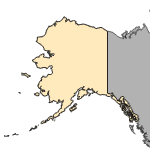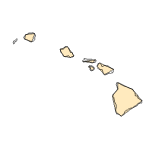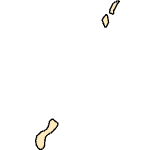Siren intermedia
(Lesser Siren)
Amphibians-Salamanders
Native Transplant |
|
Common name: Lesser Siren
Taxonomy: available through
www.itis.gov
Native Range: Atlantic and Gulf Coastal Plain from Virginia to Mexico, northward up the Mississippi River Basin to Illinois and Indiana (Conant and Collins 1991).



|

Alaska |

Hawaii |

Puerto Rico &
Virgin Islands |

Guam Saipan |
Hydrologic Unit Codes (HUCs) Explained
Interactive maps: Point Distribution Maps
Nonindigenous Occurrences:
Table 1. States with nonindigenous occurrences, the earliest and latest observations in each state, and the tally and names of HUCs with observations†. Names and dates are hyperlinked to their relevant specimen records. The list of references for all nonindigenous occurrences of Siren intermedia are found here.
Table last updated 12/17/2025
† Populations may not be currently present.
Means of Introduction: May have come in via a plant shipment from Arkansas in 2005 (Micheletti 2010).
Status: Two adults and 40 larvae were removed when the pond was drained (Micheletti 2010).
Impact of Introduction: The impacts of this species are currently unknown, as no studies have been done to determine how it has affected ecosystems in the invaded range. The absence of data does not equate to lack of effects. It does, however, mean that research is required to evaluate effects before conclusions can be made.
References: (click for full references)
Conant, R. and J.T. Collins. 1991. A Field Guide to Reptiles and Amphibians of Eastern and Central North America. Houghton Mifflin Co., Boston.
Micheletti, S. J. 2010. Siren intermedia (Lesser Siren),extralimital introduction/reproduction. Herpetological Review 41(4):470.
Revision Date: 6/29/2023
Citation Information:
U.S. Geological Survey, 2025, Siren intermedia Barnes, 1826: U.S. Geological Survey, Nonindigenous Aquatic Species Database, Gainesville, FL, https://nas.er.usgs.gov/queries/FactSheet.aspx?speciesID=2846, Revision Date: 6/29/2023, Access Date: 12/17/2025
This information is preliminary or provisional and is subject to revision. It is being provided to meet the need for timely best science. The information has not received final approval by the U.S. Geological Survey (USGS) and is provided on the condition that neither the USGS nor the U.S. Government shall be held liable for any damages resulting from the authorized or unauthorized use of the information.